tl;dr: This camera is the best DX camera yet when it comes to build quality and speed, and is the best camera I've ever used when it comes to autofocus capability (extremely helpful for sports and wildlife). Buy the D500 on Amazon.com for $1799.
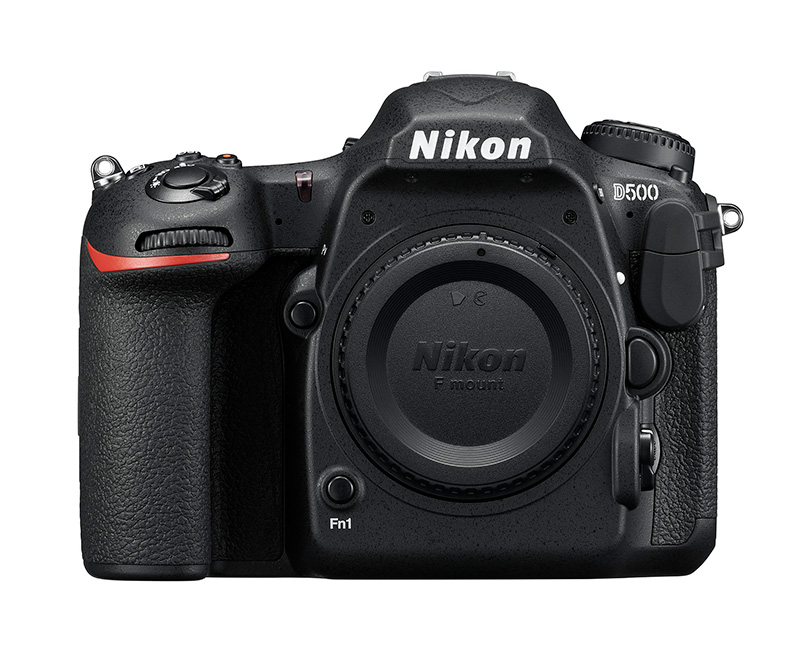
This week I had a chance to rent a Nikon D500 to shoot a soccer game, so I rented it for 3 days from BorrowLenses, and spent some time testing it in various settings where I normally use my older D7000. Over the past six years since I bought the D7000, I've rented or borrowed most of the modern Nikon lineup, from the D7200 to the D800 and D4s, and I've also been fortunate to try out some more 'exotic' (to me, at least) glass with some of these cameras.
While I focused mostly on testing and working with my 70-200mm f/2.8 VR lens, I also spent some time taking candid portraits using available light, doing some studio photography, etc., and generally using the camera in all the ways I typically use my own camera.
I've considered upgrading my older D7000 body for some time, but I've been waffling for years on whether to go with a midrange FX body, or stick it out for the high-end DX body. After waiting many years for something better than the D300s, I finally used a D500... and I think it might be time for me to switch to FX (maybe the D750?), but only because high ISO performance matters most for my style of shooting.
What follows is my quick take on this camera—in this review I'll only focus on a few highlights like handling, high ISO image quality, and autofocus performance, since there are many reviews elsewhere that get into the nitty-gritty like scene modes, software settings, button configuration, 4K video performance, etc.
Body and Handling
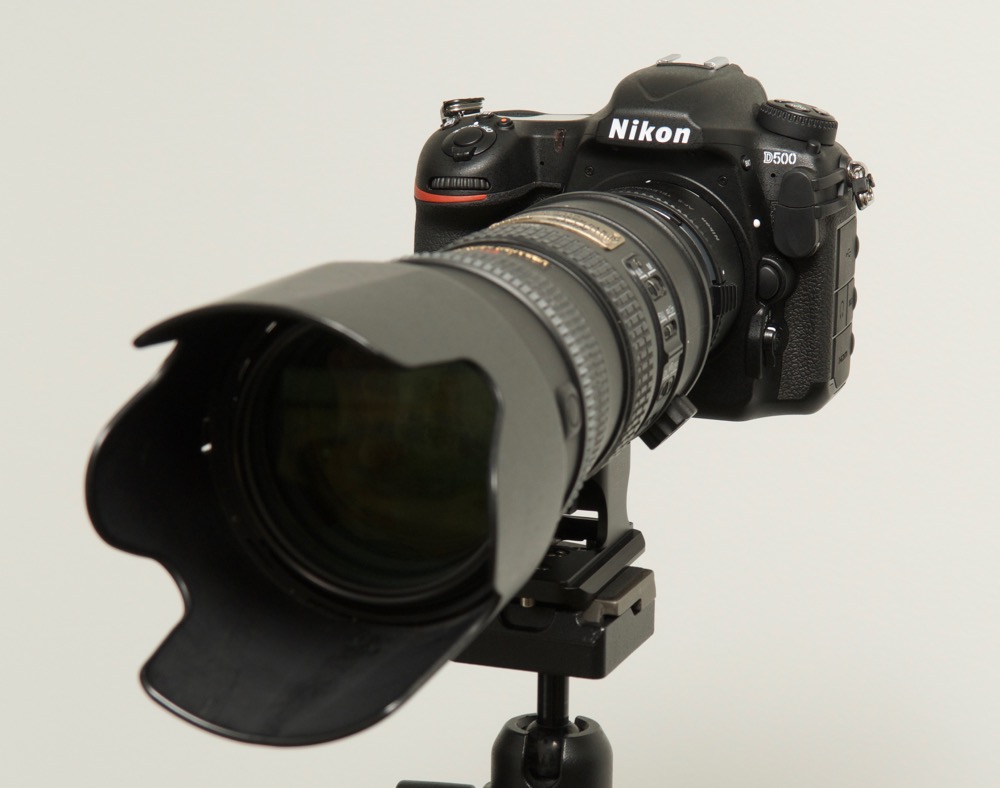
D500 with my 1st generation 70-200mm 2.8 VR and a TC-17e II teleconverter
Picking up the D500, you realize it's a pro-level body. It has more heft than any of the semi-pro bodies, it has magnesium and carbon fiber reinforcement, and it's a good finger taller in the grip. Some people love this, some people hate it. I love it, because my hand fits perfectly on the D500 grip, while my pinkie only loosely holds the bottom of the smaller bodies (D7xxx, etc.). The body feels very much like the D700 and D300/s, which is a good thing. With a vertical grip, it is a solid replacement for a flagship model in terms of look and feel.
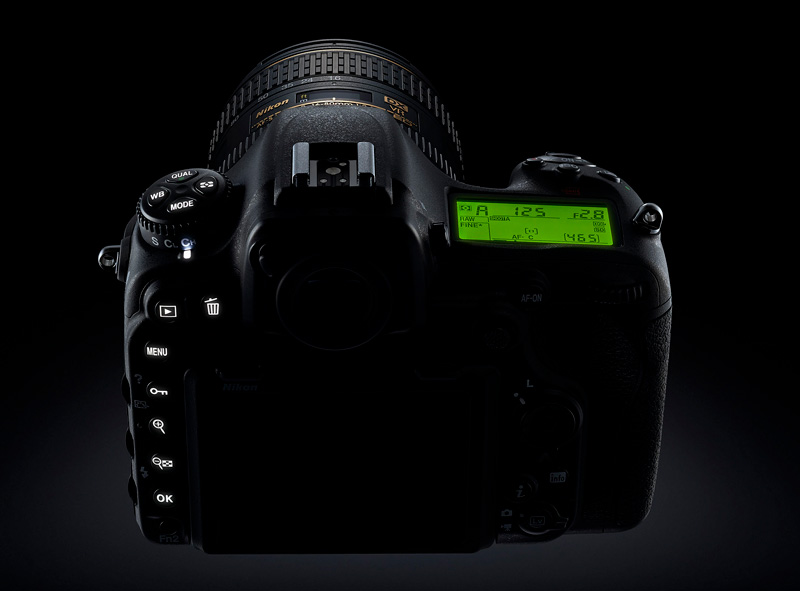
Buttons are illuminated, making for a pleasant experience shooting in darker locations.
Pull the on/off switch to activate the screen backlight and—woah, what's that? Backlit buttons! This is a really nice feature, and having it on the D500 at a nighttime soccer game made me feel the same way I did when I bought my first laptop with a backlit keyboard. It's so much easier to be discrete and find the right button. With muscle memory, you'll not need the backlighting as much over time, but it's definitely handy, and the lights are a nice white tone, not the ugly blue that screams cheap.
Speaking of muscle memory... If you jump between a semi-pro and pro body often, you're already used to the fact that every generation and lineup of Nikon body seems to swap a few buttons. Nikon can never settle on a particular layout. On the D500, the ISO button jumps over to behind the shutter, the movie record button to its left. There's an OK button tucked near the bottom left of the back... I'm not going to get into the details, but I really wish Nikon would settle on a layout for a few years, and try to be more consistent. It's really hard to get a feel for more than one body/generation of Nikon DSLRs at a time!
Once you start taking pictures, you'll hold the camera up to chimp... and WOAH (the picture below can't do it justice):
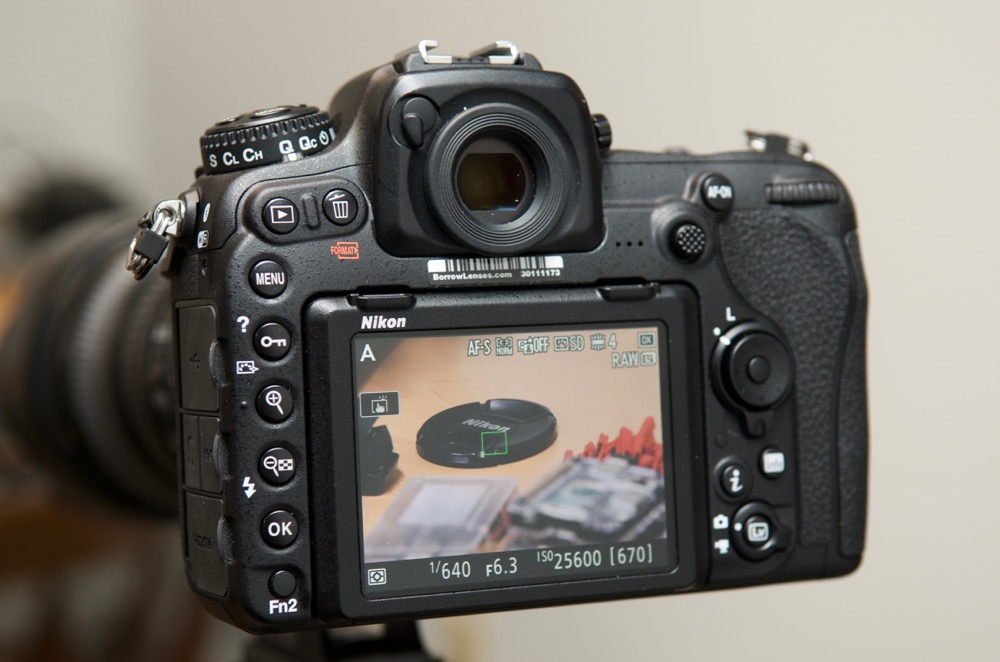
The touchscreen is gorgeous.
Early Nikon DSLRs had postage-stamp-sized LCD screens that were barely adequate for previewing photos. The mid-generation models had 640x480 or higher resolution, but were still just okay for previewing sharpness and color. The 2,359k dot LCD on the D500 and D5 is mind-blowing compared to all previous screens (though it's still puzzling to me why a $5,000+ camera like the D5 doesn't have a display to match the gamut and resolution of my iPhone 7...). Photos pop, and you can easily see when pictures are slightly out of focus, even when zoomed out.
I really hope Nikon standardizes on this higher-resolution display for the semi-pro bodies in the next generation. It's a huge improvement. Having a touchscreen (with only a few supported gestures at this time) is nice, as is the ability to swivel it for photos in awkward positions or low on a tripod... but I don't use those features much, so it's not a huge deal to me.
High ISO Image Quality
There are two main reasons I still own a DSLR even though my iPhone's camera is most often used for candid shots: pro-level lens image qualities (zoom, focus, and bokeh), and the ability to shoot in available light without a ton of noise or color cast. And being Nikon's flagship DX camera, with an APS-C-sized sensor instead of the nice big FX sensor, I wanted to see how the D500 handled low-light, high-ISO shots.
There are a lot of comparisons around the web, and DXOMark rates the D500 at 1324 ISO for sports (compared to 1333 for the D7200 and 1167 for my D7000), so I would expect only a marginal improvement over what I'm used to. So let's see a series of shots with a progressively higher ISO value, shot in available light in my office. I mounted the D500 with my 70-200mm f/2.8 VR lens on my tripod and shot a small cluster of Raspberry Pi Zero computers on a white posterboard backdrop, using available light from my LED office lights (output around ~5000K at 3200 lumens on the ceiling). Here's the test rig:
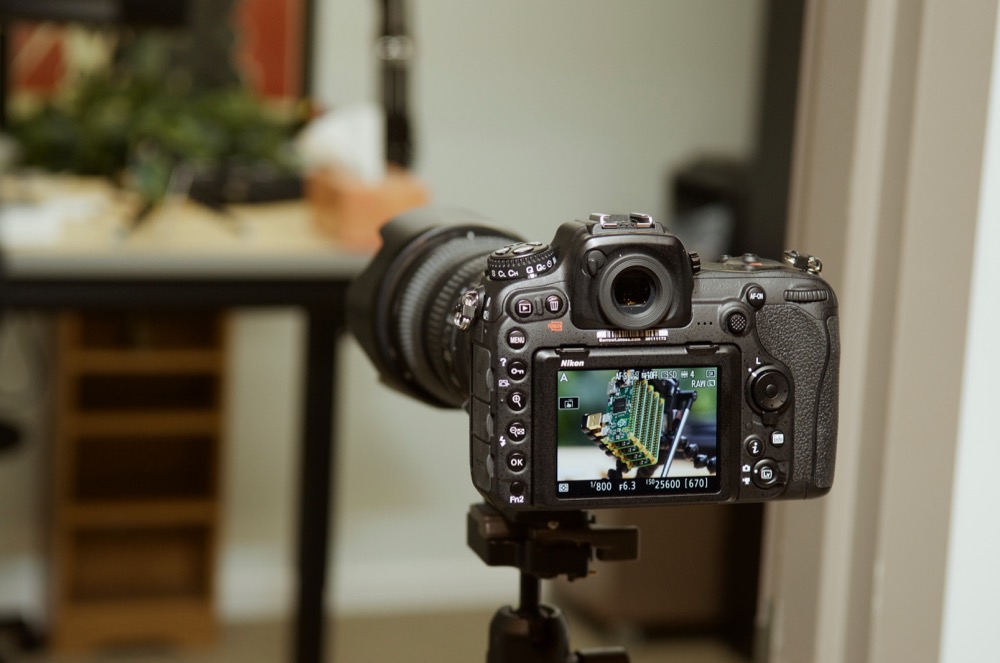
TODO
And here are images at ISO 800, 3200, and 12800:
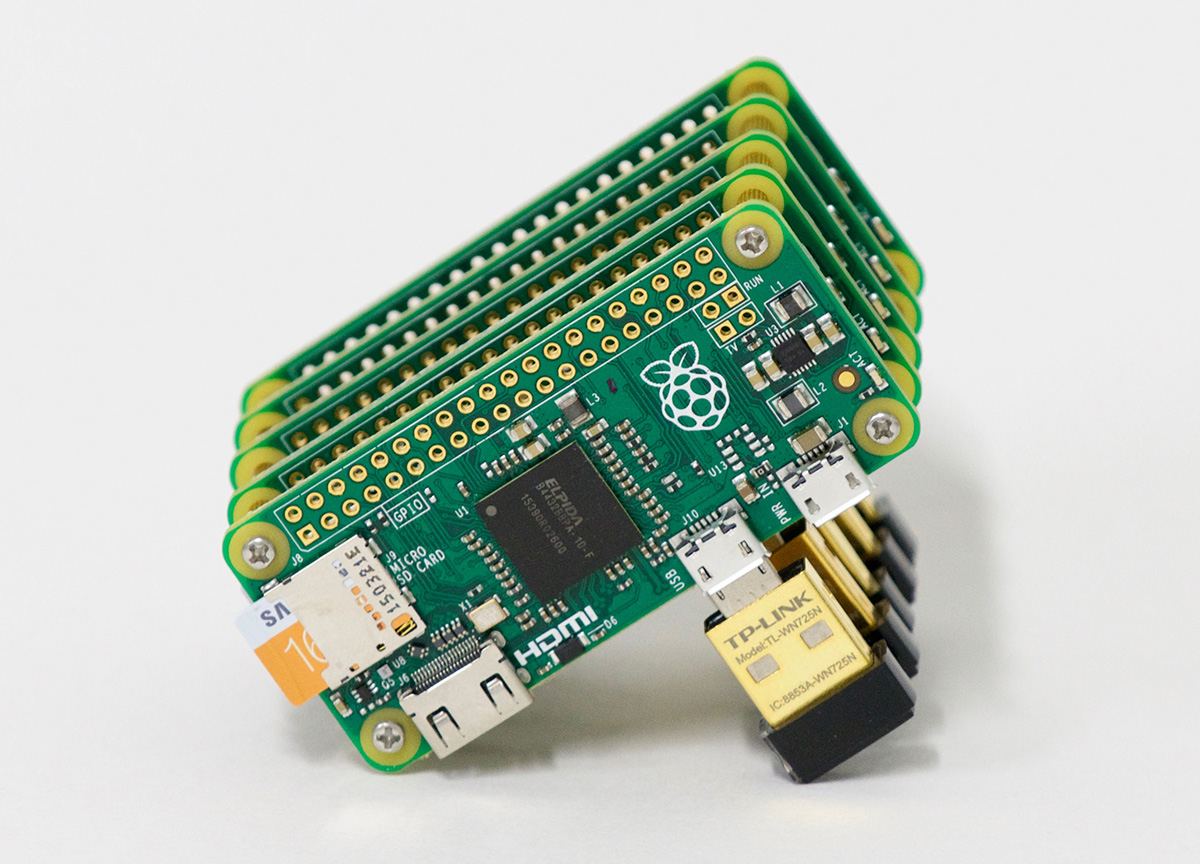
Raspberry Pi Zero cluster @ ISO 800
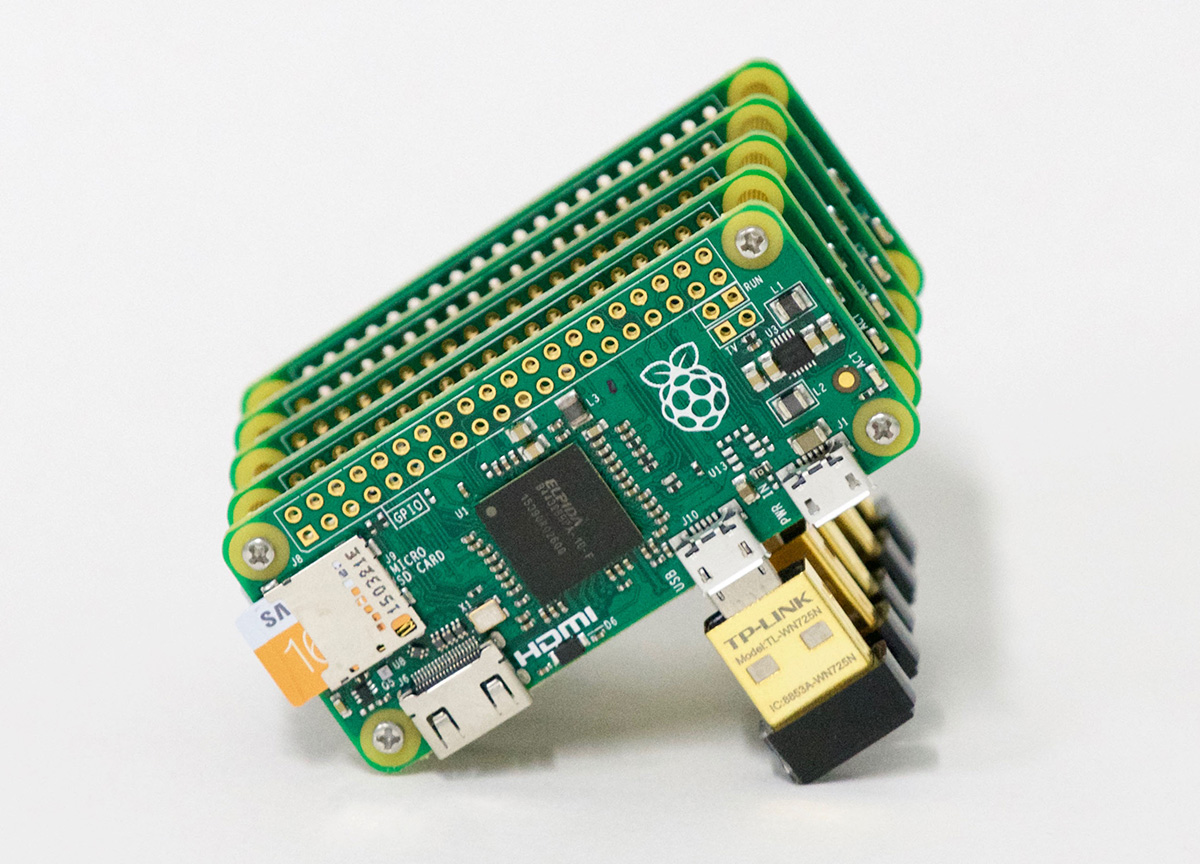
Raspberry Pi Zero cluster @ ISO 3200
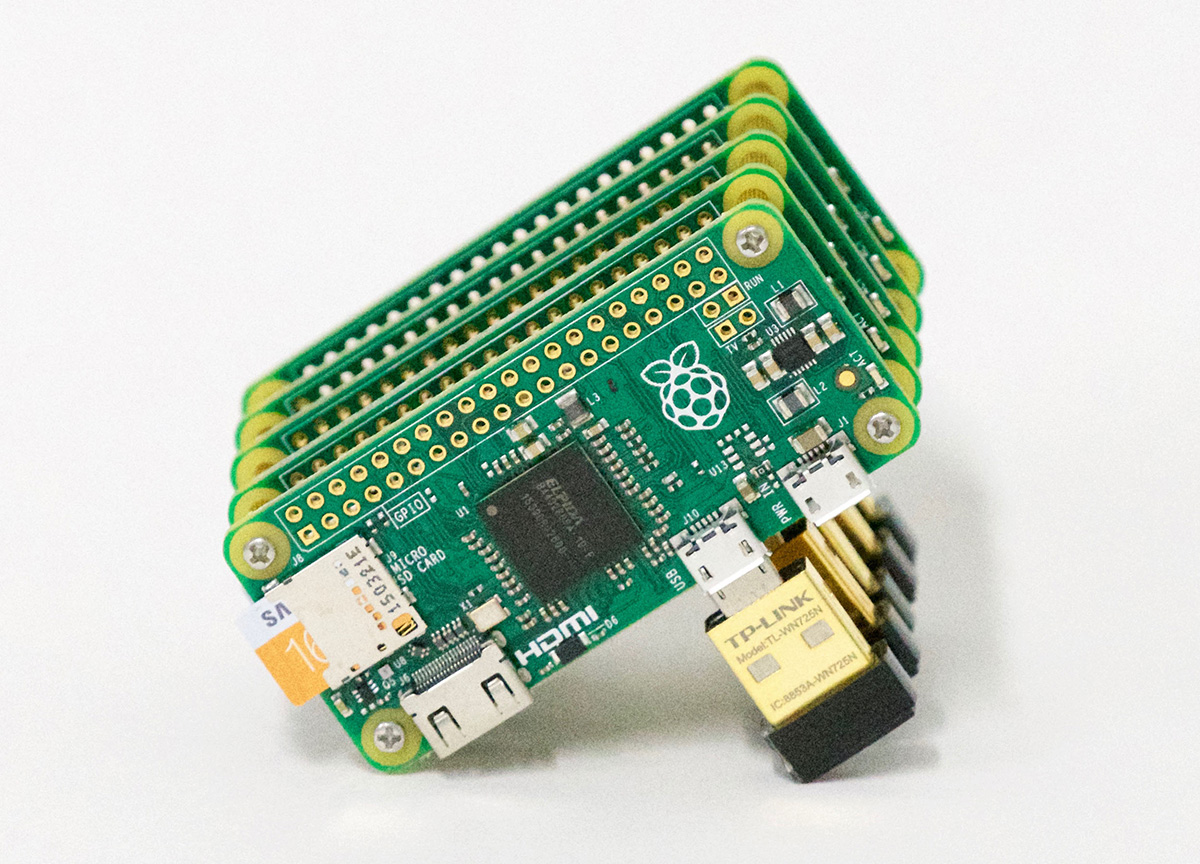
Raspberry Pi Zero cluster @ ISO 12800
I'm not as worried about ISO 200, 400, and insanely-high ISO settings that blow your mind like Hi2/204800 and beyond, because on the low end, any modern SLR has excellent IQ (maybe different amounts of dynamic range... but that's not my main concern), and on the high end, I would only use those settings as a last resort. I would buy an FX camera if I needed an extra stop or two.
Here's a 100% crop of the middle of the three images above:

Nikon D500 High ISO detail comparison - 100% crop
I locked focus, used mirror lock-up, and switched off VR on the lens to try to stabilize the shot, and the difference in sharpness seems mostly due to the camera's in-body noise reduction. The performance up to and including ISO 12800 is pretty awesome (for a DX body)—on par with the D7200, and definitely better than my D7000. But if you've ever used an FX body (pretty much anything D3/D700 and beyond), you'll never find DX to be quite adequate :)
Autofocus performance - Sports in terrible low light
The main reason I chose to rent the D500 over the D750 was it's legendary autofocus performance.
Lately, Nikon's been besting other manufacturers with a higher number of cross type focus points and better software for '3D' continuous focus tracking. They decided to change the game yet again with the amazing new AF system in the D500 and D5, with a whopping 153 sensors (99 cross-type) spread out across the viewfinder. Team sports with little to no pause in action and a large field/court are a torture test for autofocus, so I put this camera through it's paces, hoping for something better than the 50-60% keeper rate I would get with my D7000 and it's 39 focus points (only 9 of which are cross-type).
I shot handheld with just the D500 and my 70-200mm f/2.8 lens and got some excellent shots like these (here's the full album: Souls and Goals 2016 Soccer Game):
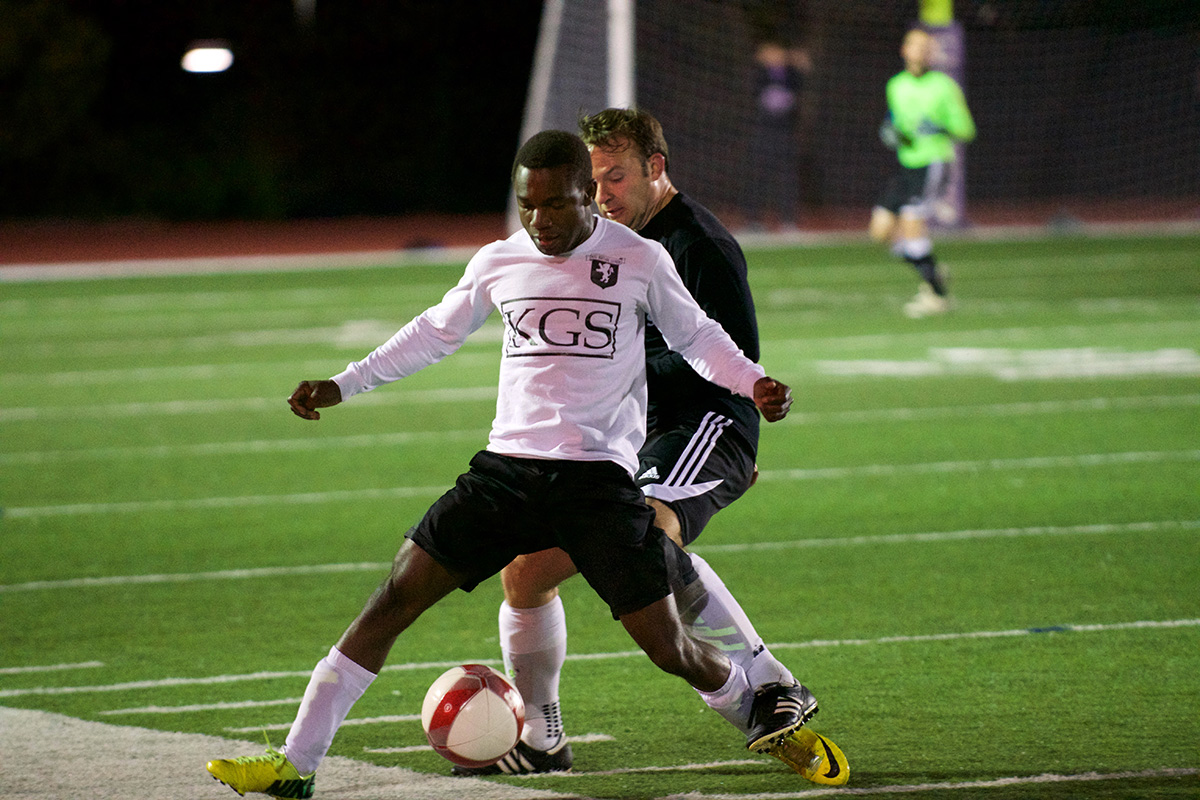
D500 with 70-200mm 2.8 VR @ 180mm, f/2.8, 1/640, ISO 6400
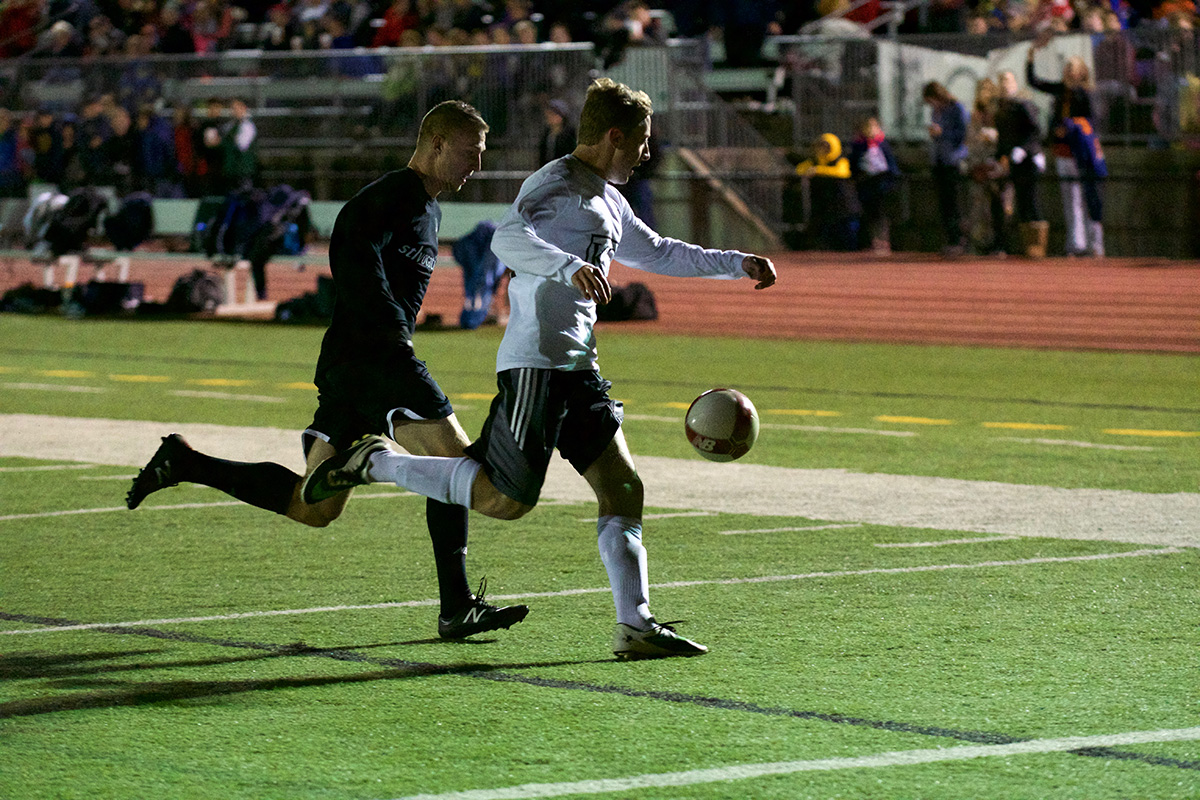
D500 with 70-200mm 2.8 VR @ 120mm, f/2.8, 1/800, ISO 6400
They're not as good as what I could get in better lighting or in a daytime setting, but they're excellent considering the weak ambient lighting! Using the D500's 3D continuous autofocus tracking, I set the first point, half pressed the shutter with the point on the person, then gunned at 10 frames per second and watched as the focus point stayed on top of the person or object I initially set. It even worked well focusing on a player as he ran behind another player for a couple frames!
Even though the D5 has the same autofocus system, the D500's autofocus points cover almost the entire viewfinder, meaning this is the first DSLR to have the same sort of AF coverage that mirrorless cameras and smartphones enjoy—except the AF system is way more intelligent and snappy, at least for photographs... video is another matter entirely, not covered in this review.
SnapBridge
Coming very late to the SnapBridge party, I had high hopes that the iOS app was finally up to snuff and SnapBridge would be as seamless with my iPhone as my old EyeFi wireless SD cards were back in the day with my laptop during events.
Unfortunately, after spending a couple hours finally getting things connected at home... and just barely so, I decided to abandon all hope and give up on ever using SnapBridge as it currently exists. There's no way I'm going to spend half an hour setting... and re-setting... a connection between my camera and smartphone while I'm shooting an event.
SnapBridge is a gimmick at this point. And, sadly, it's slower and worse in every way than carrying around a card reader and doing everything the old-fashioned way.
Update: Thom Hogan spells out the myriad problems with SnapBridge in much more detail.
Summary
If you shoot sports or wildlife, and enjoy the 1.3x crop factor inherent to a DX body (and are willing to sacrifice the high ISO quality using DX vs FX), the D500 is the best camera you can buy today. In anything but the worst lighting, the D500 keeps up with the D5 and exceeds all other cameras for autofocus tracking and continuous release speed. All the other little niceties like backlit buttons and a double-resolution LCD that flips up and down are just icing on the cake. This is a solid pro-level DX camera, and a worthy successor to the D300/s.
If autofocus and the crop factor aren't important for your style of shooting, and you require utmost overall image quality, especially at high ISOs, you might be better served by Nikon's FX cameras, like the D810 (for incredible dynamic range) or pretty much any other FX camera (for better high ISO performance).
But as always, invest more in the glass you put on the camera body than the camera body itself—I can make a better image with an ancient D50 and my 70-200 2.8 than I can with a D5 and a cheap variable-aperture zoom!
Gear mentioned in this post:
- Nikon D500 - $1799 on Amazon.com.
- Nikon D750 - $1799 on Amazon.com.
- Nikon 70-200mm f/2.8 VR lens
- Nikon TC-17e II 1.7x teleconverter
- Nikon D7000